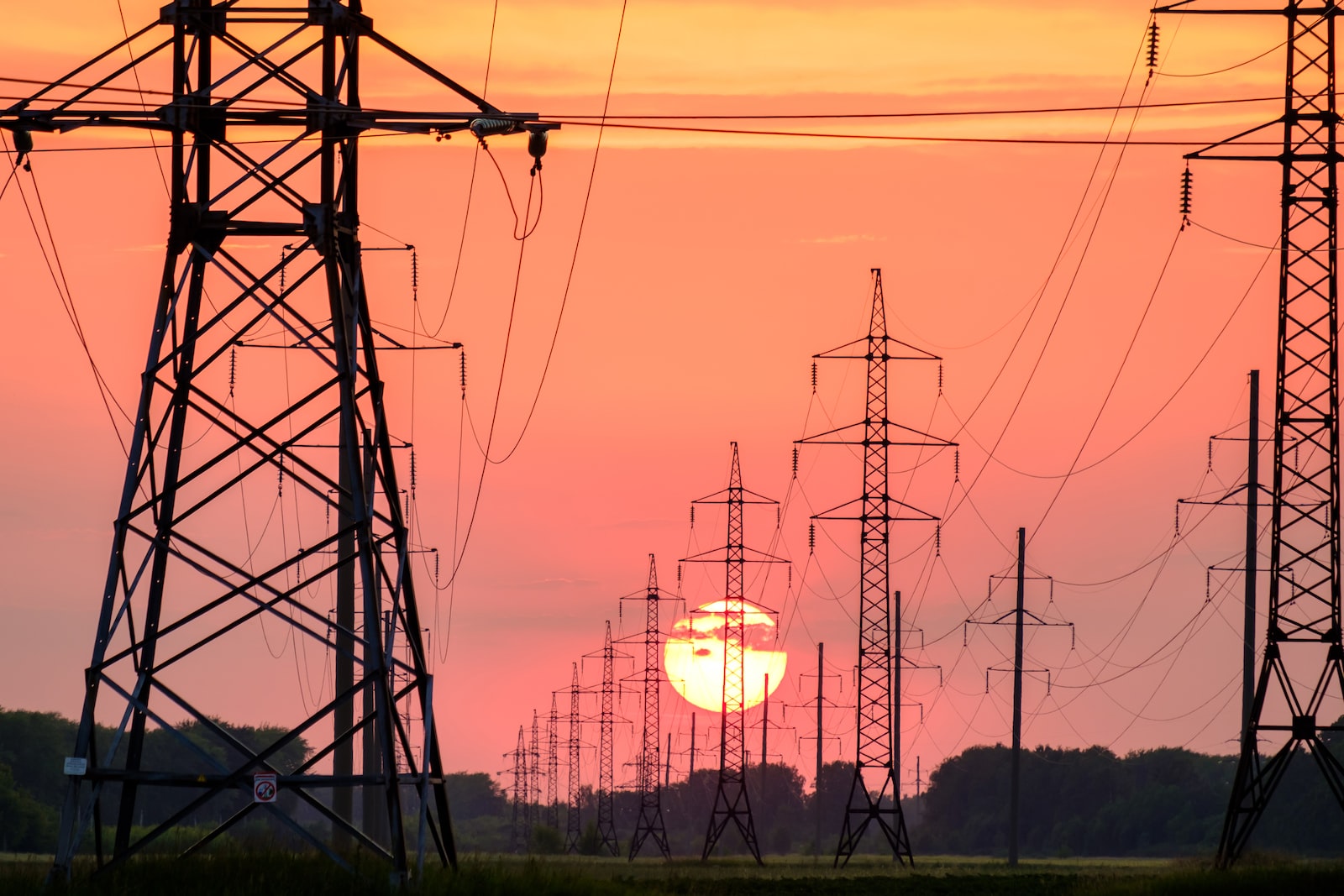In estimates I asked the Chief Scientist how heat was transferred from CO2 to N2 and O2, the two molecules that make up around 99% of the atmosphere.
I asked this, because this is the basis on which billions (if not trillions before it’s ended) are being spent to justify tearing down our home made base load energy grid in favour of foreign made renewables.
I got a word salad in reply and I’m afraid to say the answer to the Question on Notice was also a word salad (see below), that did not answer how CO2 transfers heat.
Climate alarmists argue that the increase in CO2 in the atmosphere has increased the temperature by at least a degree resulting in climate change that will cause global boiling.
They call the increase of CO2 the greenhouse gas effect. This in itself is oxymoronic because CO2 is a gas and a greenhouse is a solid. Solids trap convection or more specifically a greenhouse traps rising thermals generated as the sun heats the air inside the greenhouse.
In the atmosphere there is no solid object that stops hot air from rising. You can easily see that by observing the clouds especially cumulonimbus clouds. Similar phenomena is observed as steam rises out of a boiling jug or an air balloon rises as heat is pumped into it.
But back to the question. How does CO2 transfer heat to N2 and O2? The latter two molecules are transparent to radiation so the only way they can get hotter is if they collide with CO2 atoms. In order to adhere to the first principle of thermodynamics and Newton’s third law of motion energy must be conserved.
So any energy transferred to N2 or O2 molecules will result in a loss of energy from the CO2 molecule. Assuming the same weight, in order for 1 molecule to heat 10,000 molecules by 1 degree that one molecule must be 10,000 degrees as it will lose energy every time it collides with another molecule. CO2 is 1.53 times heavier than N2/O2 so it only needs to be 6600 degrees. This is still hotter than the Sun and is therefore impossible.
Furthermore as the following article states, gases are poor conductors of heat:
“Gases are poor conductors of heat because their particles are widely spaced, reducing the frequency of collisions and energy transfer.
In solids, the particles are closely packed together, which allows for easy and quick transfer of energy from one particle to another. This is why solids are generally good conductors of heat.
However, in gases, the particles are far apart from each other. This wide spacing means that the particles have to travel greater distances to collide with each other and transfer energy. As a result, the process of energy transfer is much slower in gases, making them poor conductors of heat.
The process of heat conduction in gases is also affected by the low density of gases. The density of a substance is directly related to the number of particles present in a given volume. Since gases have a low density, they have fewer particles in a given volume compared to solids or liquids.
This further reduces the frequency of collisions and hence the rate of energy transfer. Moreover, gases are poor conductors of heat because they have a low specific heat capacity.
Specific heat capacity is the amount of heat required to raise the temperature of one kilogram of a substance by one degree Celsius.
Gases generally have a lower specific heat capacity than solids or liquids, which means they require less heat to increase their temperature. This property makes them less effective at conducting heat.
In addition, the random and rapid motion of gas particles also contributes to their poor heat conduction.
Unlike in solids where particles vibrate around fixed positions, gas particles move freely and randomly. This random motion means that even when a particle gains energy and moves faster, it may not necessarily collide with another particle to transfer that energy. Instead, it might just move away, carrying the energy with it. This randomness in motion further slows down the process of energy transfer, making gases poor conductors of heat.
In conclusion, the wide spacing of particles, low density, low specific heat capacity, and random motion of particles in gases all contribute to their poor heat conduction.”
– Why are gases poor conductors of heat? | TutorChase
Long story short, scientists can’t explain how CO2 can transfer significant amounts of heat to the rest of atmosphere because it doesn’t in fact do that. The Greenhouse Gas Effect is a lie.

Economics Legislation Committee
05/06/2024
Estimates
INDUSTRY, SCIENCE AND RESOURCES PORTFOLIO
National Reconstruction Fund Corporation
Senator RENNICK: I want to speak to the Chief Scientist. I’d like to get some evidence in relation to the greenhouse gas effect. We often hear today the debate around renewables is all to do with climate change, and that’s a tautology because the climate’s always changed, but I still have issues around the greenhouse gas effect and in particular the idea that an extra hundred parts per million of CO2 effectively heats up the other million parts. A hundred parts per million is one part per 10,000. The first law of thermodynamics, the equivalent of Newton’s third law of motion, is that for every action there’s an equal and opposite reaction. It’s not, but let’s assume carbon dioxide is the same weight as N2O2. How can one atom of CO2 heat up 10,000 atoms of N2 and O2 through conduction unless it itself is somewhere around 10,000 degrees?
Dr Foley : I think this is something we covered three years ago, when I went and visited you and went through the—
Senator RENNICK: We didn’t actually talk about this particular law.
Dr Foley : I don’t have all that information at my fingertips. It might be something to come back to you on. Very briefly, though, you’ve got to remember the way the different molecules in the atmosphere operate means they have different abilities to absorb energy from—
Senator RENNICK: That’s through radiation, the CO2, yes.
Dr Foley : So they are able to store different amounts of energy. Just like you have different battery materials that can store different amounts of energy, so too can different molecules in the air. Greenhouse gases are ones which, unfortunately, are very good at absorbing a large amount of energy, more so than other molecules.
Senator RENNICK: Yes—incoming and outcoming.
Dr Foley : When you have more of that, you end up with more energy being caught in the system. When you have more energy in the system, that means that you end up with bigger changes. You have the ability for the atmosphere to move more, so you end up with big differences. As you would imagine, with changes in weather, as we’ve seen, you’ll have more cyclones and more weather events, and that’s because there’s more energy in the system.
Senator RENNICK: I’m glad you raised that. That’s the second law of thermodynamics, right? The height of the troposphere at the equator is 16 kilometres. You talk about how there’s more energy in the system. That’s evidenced by that we see that if you put heat in a hot air balloon it rises. We know that the height of the troposphere at the equator is 16 kilometres and the height of the troposphere at the poles is six kilometres. We know that heat expands. So the idea of gas as a greenhouse, CO2 compared to a greenhouse—CO2 is a gas, and a greenhouse is a solid. That doesn’t stand up. The whole analogy of comparing a gas to a solid is wrong and is an oxymoronic statement in itself. ‘The greenhouse gas effect’ is actually a moronic statement.
Dr Foley : With respect, some of the things you’ve put together there actually don’t work in the way that you described. It’s something which I don’t want to end up fumbling my way through and giving you a bad answer on. Can I take that on notice so that I can make sure I give you a clear answer.
Senator RENNICK: Sure. In regard to my first question, given that N2 and O2 are transparent to radiation, how is it that the CO2 molecule heats the N2 and O2 if it’s not through conduction? If there’s a process by which they get heated other than conduction, I want to know about it.
Dr Foley : It is other than conduction. Let’s take that on notice so I can give you a nice clear one and make sure that you get a good understanding of that.






























